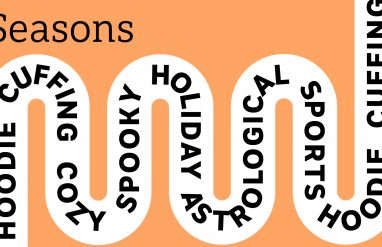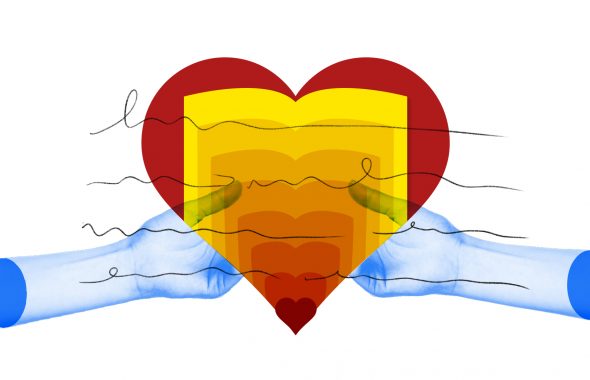Expand your child’s vocabulary with these fun word activities
Have your child complete one of the vocab activities below to build their language or complete one of the family activities to get a little learning boost for all those involved.
Learning words for feelings
Put these videos on for your child, one at a time.
- After each video, ask them what the kids in the video talked about. Play the video again and ask a new, more specific question, about the video and what the kids in the video talked about.
- Video 1: Kids Redefine Nostalgic Words From Your Past
- Video 2: These Kids Know More About Idioms Than You Do
- Video 3: Kids Redefine Parenthood
Family time activity:
Review the slideshow: These Words Help Explain Big Feelings To Kids.
Copy down some of the feeling words onto construction paper.
Draw faces that reflect the feelings under each word.
Watch the videos above again.
Ask your child what the kids are feeling at different points in the video. Have them point to the faces/words you drew on paper.
- This also works for any movie or TV show and allows for some meaningful engagement with screen time.
Learning animal vocab
Find pictures, stickers, magnets, books, or toys around the house of different animals.
- Get a piece of masking tape or a sticky note and put it on each animal you’ve found. Write the word for the animal on the tape or sticky note.
- Hide the animals around a room. Ask your child to go on an animal scavenger hunt.
- Every time they find one of the animals, ask them to call out its name. Then, ask them to look at the word on the animal and say the first sound in the word. (They can also say the ending sound as well!)
Family time activity:
Make a list of animals.
Make sure there is an animal for every letter of the alphabet (if possible).
Cut the list up into little strips of paper.
Put the strips into a hat or bucket.
Have each family member take turns picking out a strip of paper.
Have your child look at the word on the paper and call out the first letters they see. Then help them sound out the beginning or ending sounds of the word on the paper.
Now each family member takes turns doing their best impersonation of that animal. Roar!
Learning color vocab
Find some masking tape and write different color words on each piece. (Example: green, blue, etc.).
Put the pieces of tape on a piece of paper or cardboard.
- Then, put another set of tape with the same color words onto play cars, blocks, or anything else that exists in all of these colors (example: tape the word green on a green car, red on a red block).
- Have your kid match the toy with the color word on the cardboard or piece of paper so all the toys line up with their correct color.
Color toss.
If you have color balls, balloons, socks (anything soft you can throw), put them in a pile.
- Call out colors and ask kids to throw, kick, or bounce the balls, balloons, or whatever object you choose to you or to each other.
Family time activities:
Drawing and labeling activity.
- Ask each person in the family to draw a picture, any picture! Use different color crayons or markers.
- One picture at a time, start to label the parts of children’s work as they point them out with legible writing, specifically the colors of objects in the picture or the amount of objects in the picture (brown leaf or 2 trees).
- Bonus: Ask everyone to answer the following questions about their picture: “Is this a story? How does it go?” Write down children’s words and read them back.
Learning about rhyming vocab
Gather a collection of household items and toys.
Make sure all of them have a rhyming partner (e.g., doll/ball, truck/duck, block/sock/rock, car/star, frog/dog, man/can, bear/chair, two/shoe, plate/eight).
Ask your child to match the objects that rhyme.
As a variation, choose only one item or toy (e.g., rock).
Send your child on a hunt around the house looking for other objects that rhyme with it (e.g., clock, sock, chalk).
Words without rhymes
Have children watch this video about words without any rhymes.
WATCH: Are There Any Words Without Rhymes?
Have your child create made-up words that rhyme with the words in the video.
Ask them to think of any other words they can that might not have a rhyme.
Hint: most words do have rhymes except for the words in the video above.
Help your child think of a rhyme for the words they come up with.
Find objects to help illustrate the rhymes you’re coming up with or write out the words to show them similar letters within the words.
Learning plant vocab
Look through books for pictures of plants.
What parts do you see? Name the parts of a plant for your child (e.g., stem, leaves, flowers, roots).
Go on a neighborhood plant hunt.
Talk about the plants you find. Do all leaves look the same? Do all plants have the same number of flowers?
After the neighborhood plant hunt, ask your child to draw a few of the plants they saw.
Label their picture with the plant parts.
Have your child take our quiz about plants.
Help them answer the questions if needed.
Family time activity: eat every part of a plant!
Using food from your fridge, build a plant on your child’s plate:
- Roots: carrots, potato, beets
- Stem: celery
- Leaves: lettuce, parsley, spinach
- Flower: broccoli, cauliflower, artichoke
- Seeds: sunflower, sesame
Now eat up!
Learning about opposites
Look at pictures in books.
Ask your child to tell you words to describe what they see in the pictures (e.g., “big tree,” “happy child,” “sleepy dog,” “pretty flower,” etc.).
Make sure they include an adjective in their description. You may need to offer a little help with this!
Write down each description your child says.
Work together to think of the opposite of each description (e.g., “small tree,” “sad child,” etc.)
Fold several sheets of paper in half and staple them in the center to make a book.
On one page write the description your child said in #2 and on the other side write its opposite. Have your child draw pictures to go with each page.
Encourage your child to read aloud their book of opposites!
Learning CVC words
Use letter magnets or a white board to write a CVC word like bat.
- First, say the word aloud sound-by-sound and have your child create the word.
- Then, swap out the vowel to create another word, like bit.
- Play around with creating different words by swapping out the vowels without changing the consonants.
- Alternatively, you can swap out the first letter while leaving the vowel and the last letter the same to create lists of rhyming words.
- Have your child practice swapping out the letters themselves and then help them sound out words after they make the swaps, if needed.
Family time activity:
Hide pirate treasure. Ahoy, matey!
- Decorate a treasure box, load it with sticky notes or pieces of paper that have CVC words written on them, and draw a map to remember where it’s buried.
- Sing some rhyming sea chanteys as you head out on your next voyage.
- When you’re ready for someone to retrieve the treasure, write clues to help them find it.
- Once they find the treasure, see if your child can read all the words aloud. Bonus if the words create a fun message!
Learning about definitions
Review the following definition pages of common words with your child.
Explain how all words have definitions.
You can look at the definition page for definition to show them the meaning of this word.
Print the Dictionary.com Coloring Book for your child.
Click the image below to get the PDF printable of pages A–E.
- Have them color the pictures and examine the illustration while they color. Ask them to write a definition of the word based on the illustration. (You can help them write their definitions while they tell them to you too!)
Family time activity:
Watch a movie or read a book together.
Pick some words out from the movie or book and ask your child to define them for you. Offer your own definition too. Then look up the words on Dictionary.com to see if you both were right!
Psst! You can use this Disney activity to help you find words from some classic movies to define.
Words for textures
Texture hunt.
- Discuss the meaning of each texture word: soft, smooth, rough, hard, bumpy.
- Write the texture words on separate pieces of paper or note cards.
- Send your child on a hunt around the house to bring back an object with each texture.
Texture hand art.
- Trace your child’s hand on a piece of paper and help them cut it out.
- Write a different texture word on each finger (soft, smooth, rough, hard, bumpy).
- Glue an item of each texture on the correct finger. For example:
- soft – cotton ball
- smooth – piece of tape
- rough – sand paper
- hard – uncooked pasta
- bumpy – small sticker “gems”
Family-time activity:
Guess the object.
- Collect multiple objects that have interesting textures. Make sure to gather two of each object.
- For example: cotton balls, blocks, sand paper, beans, unpeeled clementines, washcloths, etc.
- Put one set of objects out of sight and place the other set on the table for everyone to see.
- Choose one of the hidden objects to put inside a paper bag. Take turns reaching in to feel the object. Without peeking, guess what the object is by pointing to its partner on the table.



















